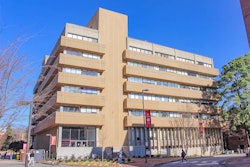More Hazardous Waste Facilities Located in Minority Areas
New research from the University of Michigan shows that hazardous waste facilities are disproportionately placed in poor, minority neighborhoods.
Dr. Paul Mohai, a professor in UM’s School of Natural Resources and Environment, is the lead author of the study, called “Toxic Waste and Race at Twenty 1987-2007, Grassroots Struggles to Dismantle Environmental Racism in the United States.” He says minorities are living in the areas where hazardous waste facilities have decided to locate.
The report suggests that demographic changes that began before the hazardous waste sites were selected continued afterwards.
“Our argument is that what’s likely happening is the area is going through a demographic shift, and it lowers the social capital and political clout of the neighborhood so it becomes the path of least resistance,” Mohai says.
The new report measures what has happened in the past 20 years in terms of environmental injustice. According to the report, Michigan has the largest disparity in the proportion of minorities living near hazardous waste facilities, with the majority of those affected being Black.
Mohai says the findings verify what the environmental justice movement has argued for decades — poorer minority neighborhoods are more often chosen for hazardous waste facilities than more affluent White neighborhoods. Therefore, policies that intervene in the siting process are very important, he says.
“Policies to deal with environmental injustice by managing the siting and permitting process could be a waste of time and money if the demographic changes after siting explain why the disparity occurs,” he says.
University of Southern California Launches New Institute on Aging
The University of Southern California announced the establishment of the USC Edward R. Roybal Institute for Applied Gerontology to study the health and health care of older persons and their families, with an emphasis on low-income and minority communities.
“Minority ethnic groups comprise the fastest growing segment within the U.S. aging population and there is an increasing need for research, education and outreach to address the particular needs of these groups,” says USC Provost C. L. Max Nikias.
The Institute aims to establish a repository for research data that contributes to understanding the needs of low-income and minority communities and allows for the development of programs that improve services locally, nationally and internationally.
According to Jorge J. Lambrinos, the director of the institute, the “increased diversity of a global aging society requires a strong link between academia and community.”
“USC and the Roybal Institute will become the focal point for the expansion of knowledge about diverse populations, ensuring the improvement and effectiveness of service delivery to our elders and their families,” he says.
Edward R. Roybal, who served in the U.S. Congress for 30 years, was an advocate of public health, aging, education and minority groups.
“USC’s commitment to the causes my father cared so much about and its demonstrated tradition of serving the community makes the USC campus an ideal setting for the Roybal Institute,” says U.S. Rep. Lucille Roybal-Allard, D-Calif.
Blacks Mistrust New Voting Technology, Says Survey
A new survey conducted by Texas Southern University shows that most Blacks in Harris County, Texas, mistrust new voting technologies.
According to Dr. Franklin Jones, head of TSU’s political science department, the poll results were not surprising given the recent history of the relationship between the Republican Party and Black voters in Harris County and the historic relationships between Blacks and the Democratic Party.
“The level of distrust for both parties has a rich history. However, since the 1980s Republicans have alleged voter fraud in heavily Black precincts and have hired poll watchers for those precincts,” Jones says. “African-Americans have seen these acts as attempts to intimidate Black voters. Republican opposition to local redistricting plans favored by African-Americans has added more worry. Finally, the Republican Party has controlled county government while there have been frequent complaints by African-Americans about voting irregularities in Harris County before and after the Florida debacle.”
Black residents of Harris County rated four voting technologies on a five-point scale, with 1 indicating “very high trust” and 5 showing “very low trust.” The technologies where the Direct-Recording-Electronic voting system, or DREs, where voters cast their ballot by computer; voting-by-mail, where voters mark choices on a ballot and mail it in; Optical Scan Technology or the “Central Count” system, where mailed ballots are scanned in by computer; and Internet Voting, where voters cast ballots over the Internet using a computer. Overall, DRE voting technology was the most highly trusted among respondents.
When overall trust ratings are analyzed, the public did not have much faith in Internet voting, which received a score of -35. Vote-by-mail was close behind at –33 while optical scan methods scored -27. DREs received a score of -11.
— Diverse staff reports
There are currently 0 comments on this story.
Click here to post a comment.
© Copyright 2005 by DiverseEducation.com


















